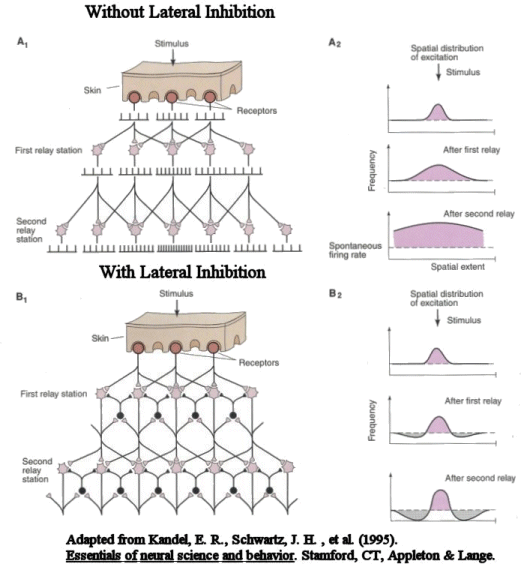The article originally appears in The Measurement Advisor.
This post discusses lateral inhibition, a neural process that helps our senses handle too much information. When a similar process occurs in our brains, it manifests as a hunger for shiny new things. Thus we fall prey to the temptations of clickbait and fake news.
If you studied sensory psychology back in college, you will recall that our senses are constantly presented with a huge and potentially overwhelming amount of incoming information. The back of your eyeball, for instance, has millions of light-sensitive cells eager to be stimulated by a traffic light, a rosy-fingered dawn, or that slightly irritated expression on the face of your spouse.
Too much data? Ignore what’s boring and pay attention to what’s new.
A fundamental neurobiological process by which we begin to make sense of all that data is called lateral inhibition. It is the process by which sensory cells, when stimulated, suppress the activity of the cells around them.
In our visual system lateral inhibition creates artificial contrast that enhances our ability to sense the edges of where light changes to dark. It helps us process a million points of light by emphasizing where those points are different from their neighbors. Those areas of change are the most valuable for us to pay attention to.
That image up at the top is the Hermann Grid illusion. There are no black dots in there; where they seem to appear is really lateral inhibition working overtime.
Lateral inhibition helps our senses manage too much data. At higher levels of visual processing, similar neural interactions help us sense changes in more complex visual characteristics, like color and motion. These changes are vital for us to notice, because changes in our environment often mean something important is happening. Back in the days of yore, when a predator appeared on the horizon we needed to see it and react. Today, whether you are sitting at a board meeting or standing at home plate, sensing change is what allows you to respond and adapt to your environment.
It’s fascinating to conjecture that lateral inhibition might be re-purposed for use at higher levels in the brain. Consider our understanding of the meanings of words. It would be useful to have some process that would help us to avoid confusion between words that seem similar. It is possible that, when we think of one word, a lateral inhibition-like process suppresses thoughts of those that resemble it. The effect would be to emphasize the “edges” between similar words. Such a process would, for example, make it less likely that we confuse “astronomy” and “astrology.”
The dark side sparkle of fake news: you can’t look away.
Our natural response to too much sensory data is to ignore what’s boring and pay attention to what is new. Just as our senses are built to detect changes, our brains are built to focus on change as well, and to pay special attention to what is different or unusual. Humans are attracted to novelty. There is a reason that “New!” and “Improved!” make advertising powerful. Or that “Breaking News!” grabs our attention. Squirrel!
Such a response was valuable way back when, when news was rare and tended to be of great value. But today we are faced with too much news to take in. There is so much new information constantly coming our way that we have to ignore some of it. Fear of missing out (FOMO) is now a big thing, because we are forced to ignore so much.
And that, of course, is both the superpower and the dark side of a bazillion clickbait headlines and an awful lot of social media. Your brain is designed to want that stuff, and Facebook was designed to deliver it. That’s why people can’t stop scrolling through their phones.
Which leads to the allure of fake news. One of the reasons why it is so compelling is that its creators harness our hardwired need to pay attention to novelty. Research shows that fresh, interesting lies are shared more often and spread faster than the boring old truth. Us oh-so-smart humans don’t just fall for fake news, we are attracted to it. Like moths to a flame, we follow its fascination to our doom.
And so the beneficial interactions of our sensory neurons are a distant relation to the neurological need that enables FOMO, Facebook, and those Russian election manipulators. Let’s hope we can teach ourselves, or perhaps evolve, to resist the monster we have created. It would make a lot of sense.
 Bill Paarlberg is the Editor of The Measurement Advisor. He has been editing and writing about measurement for over 20 years. He was the development and copy editor for “Measuring the Networked Nonprofit” by Beth Kanter and Katie Paine, winner of the 2013 Terry McAdam Book Award.
Bill Paarlberg is the Editor of The Measurement Advisor. He has been editing and writing about measurement for over 20 years. He was the development and copy editor for “Measuring the Networked Nonprofit” by Beth Kanter and Katie Paine, winner of the 2013 Terry McAdam Book Award.




